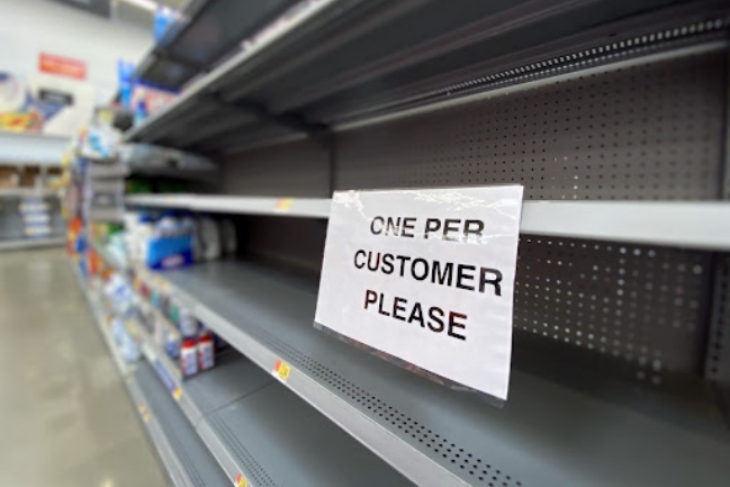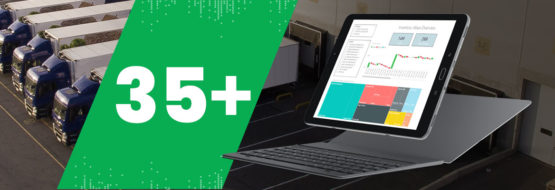Demand Planning and Forecasting: The Key to Supply Chain Challenges

For years, business leaders have struggled with the challenges of getting the right product to the right place at the right time. When a company ends up with too much inventory on hand, its capital is tied up in goods stored in the warehouse, so it can’t be put to use elsewhere. Instead of paying down debt, saving on interest expense, and preserving liquidity; its cash is committed to maintaining bloated levels of inventory. What’s even worse, inventory on hand may become obsolete, losing value as it sits on the shelf. Perishable goods, or anything with an expiration date, may lose its value altogether if held for too long.
There is equal danger in not having enough inventory on hand. Generally speaking, you can’t sell what you don’t have. Customers may come to you looking for a particular product, and if you can’t deliver it, they may go to your competition instead. In many cases, you’re not just losing an individual sale–you’re losing the customer.
Since 2020, global supply chains have been especially problematic. Factory shutdowns, shipping bottlenecks, and shortages of raw materials have led to substantial uncertainty for businesses seeking to address the vicissitudes of supply-side availability. In the traditional dynamics of supply and demand, this can often lead to price increases, which can further erode margins and profitability.
The “What” and “Why” of Demand Planning and Forecasting
To allocate assets effectively and operate more efficiently, supply chain managers have turned to the science of demand planning and forecasting. Simply put, demand planning is the process of managing equilibrium between a company’s supply of product and the inventory required to meet customer demand. The ideal scenario is for the company to have exactly as much inventory as it needs–no more and no less.
To do this, supply chain managers must be able to forecast demand, taking into account historical trends, market dynamics, and external factors that impact the sales of their products. Such factors may include major weather events such as hurricanes or winter storms, economic trends such as inflationary pressure, workforce disruptions arising from labor disputes or other causes, shipping and customs backlogs, and global emergencies such as regional conflicts or a worldwide pandemic.
By combining these factors and developing models to improve their accuracy over time, supply chain managers can become more adept at getting the right product to the right place at the right time. Walmart, which is famous for the efficiency of its supply chain management practices, frequently repositions inventory based on regional events. An impending hurricane, for example, may prompt customers to stock up on batteries, flashlights, bottled water, ready-to-eat foods, and electrical generators. The more historical data Walmart collects, the better the company is able to predict which products will be in high demand, where they will be needed, and when.
Although it might seem easier simply to build up a safety stock of these items in advance, that has the negative effects of tying up capital, consuming warehouse space, and the risk of losing value as inventory ages.
Ultimately, the ability to predict demand and respond quickly and effectively is a win for the company making the sale, and for its customers. It ensures that people have access to the products they need, while facilitating a profitable transaction for the retailer.
The Four Elements of Demand Planning
Demand forecasting is about predicting potential spikes or troughs in demand. Demand planning goes much further, though, encompassing four major subcategories of activity:
- Statistical demand forecasting involves the traditional analysis of historical data to predict future demand. Statistical demand forecasting may use complex formulas and algorithms to extrapolate future demand based on past history. This process calls for highly accurate data that is as up-to-date as possible. For many companies, statistical demand forecasting is an excellent starting point for improving supply chain efficiency.
- Demand sensing describes the processes discussed earlier–that is, using a combination of external data sources to predict fluctuations in demand, including weather, global events, and economic trends. Ideally, this should be done in real time, or as close to real time as possible. After all, it does little good to ship batteries and generators to a location several weeks after it has experienced a hurricane. Those companies that can sense changes in demand most accurately and respond faster than the competition will win more business and operate more efficiently.
- Product portfolio management addresses the bigger picture of the product life cycle, from the initial introduction of a new product through its discontinuation. Families of products can often be interdependent. For example, the sales of a new mobile phone may often be accompanied by a spike in demand for earphones designed to work with the phone. The sales of auto parts for older vehicles, likewise, will decline as new models supersede them. Product portfolio management seeks to better understand how new product introductions may influence demand for existing products in a company’s portfolio.
- Trade promotion management concerns itself with the actions the company can take to impact demand for the products. Trade promotions and other marketing strategies employ discounting, bundling, giveaways, or similar tactics to influence consumer demand. Trade promotion management ensures that such actions are part of a coordinated effort, and that their impact on customer demand is factored into the demand planning process.
Successful Demand Planning and Forecasting
What are the keys to getting demand planning and forecasting right? It starts with building accurate models based on real-time information from historical sales trends. While some planners attempt to do that with manual processes and spreadsheets, it can be challenging to produce accurate and timely reports. Tedious manual processes typically require that information be exported from a company’s enterprise resource planning (ERP) system, loaded into a spreadsheet, and further manipulated to produce demand forecasts.
Those kinds of manual processes often lead to errors, such as when new rows of data are introduced and existing formulas are rendered inaccurate. Manually constructed forecasts also tend to go out of date very quickly, and updating the information typically requires another round of tedious manual effort. For companies striving to achieve greater agility, that kind of process simply doesn’t work.
At insightsoftware, we provide tools such as demand planning and forecasting software that empower users in finance, operations, and elsewhere throughout the organization to build powerful reports, dashboards, and analytics to drive better, faster decisions. Our demand planning software solutions integrate with multiple systems, providing real-time access to information that can be refreshed with the click of a button. If your company is striving to achieve greater supply chain agility, insightsoftware can help. Contact us today to learn more, and to request a free demo.





